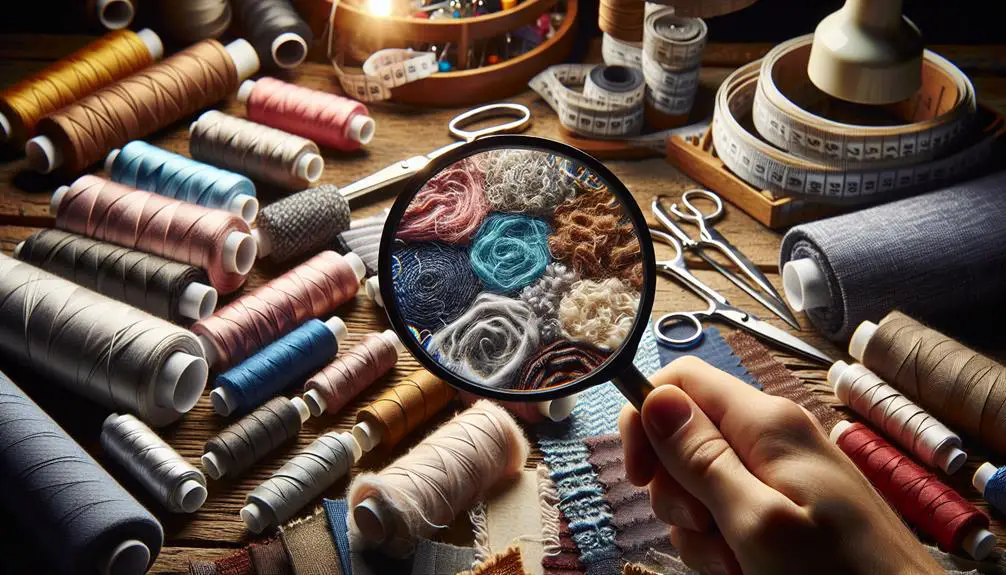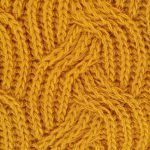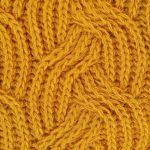Think of fabric durability as the backbone of your favorite garment, supporting its beauty through countless wears and washes. When you examine the strength of a textile, you'll consider fiber properties, the complexity of its weave or knit, and any finishing processes it's undergone. Are natural fibers always the superior choice, or do synthetic ones hold their own when it comes to longevity? You might be surprised by the impact of fabric weight and resistance to wear and tear. Let's explore how these elements come together to create a fabric that stands the test of time.
Table of Contents
Key Takeaways
- Fiber properties and weave structure significantly influence fabric strength and durability.
- Synthetic fibers offer consistent supply but contribute to pollution and may need frequent replacements.
- Abrasion resistance and finishing treatments enhance fabric longevity and wear resistance.
- Heavier textiles generally provide increased durability and resistance to wear and tear.
- Proper care and maintenance, including cold water washing and gentle detergents, extend fabric life.
Factors Affecting Fabric Strength
Several key factors directly impact the strength and durability of fabrics. To master fabric strength, you'll need to understand that fiber properties play a critical role. For instance, the type of fiber used—whether it's cotton, wool, or a blend—determines the inherent strength of the fabric. Fabric testing often reveals how these fibers respond to stress, abrasion, and wear over time, providing insights into durability factors.
When evaluating fabric strength, consider the weave or knit structure. A tightly woven fabric typically offers more strength and durability compared to a loosely woven one. The thread count also matters; higher thread counts usually result in stronger fabrics. You should also pay attention to the finishing processes, such as treatments that enhance resistance to water, stains, or UV rays. These treatments can significantly influence the durability of the fabric.
Durability factors extend beyond just the physical properties of the fibers. External conditions like exposure to sunlight, moisture, and mechanical wear can degrade fabric over time. By conducting thorough fabric testing, you can predict how a fabric will perform under various conditions, ensuring you choose materials that meet your durability requirements.
Natural Vs. Synthetic Fibers
When considering durability, you should compare the strength and longevity of natural and synthetic fibers.
You'll also need to weigh their environmental impact and the cost and availability of each type.
Understanding these points will help you make informed decisions about fabric choices.
Strength and Longevity
In comparing the strength and longevity of natural and synthetic fibers, you'll find distinct advantages and challenges with each type. Natural fibers like cotton, silk, and wool offer comfort and breathability but may not always meet high durability standards. On the other hand, synthetic fibers such as polyester and nylon often excel in durability evaluations, providing superior strength and resistance to wear and tear.
To master fabric quality, consider these points:
- Fabric Testing: Rigorous testing methods help determine how well a fabric can withstand everyday use. Standards like the Martindale Abrasion Test measure a fabric's resistance to abrasion, while tensile strength tests evaluate how much force a fabric can endure before breaking.
- Durability Standards: Understanding industry benchmarks for durability gives you insight into which fabrics are built to last. For instance, ISO and ASTM standards provide guidelines for evaluating fabric durability.
- Durability Testing: Regularly subjecting fabrics to durability evaluations ensures they meet the desired quality levels. Tests like pilling resistance, seam strength, and colorfastness help you assess if a fabric will maintain its integrity over time.
Environmental Impact
Comparing the environmental impact of natural and synthetic fibers reveals significant differences in sustainability and ecological footprint. Natural fibers like cotton, wool, and hemp are biodegradable and generally have a lower environmental impact during their lifecycle. However, they can still pose challenges. For instance, cotton demands substantial water and pesticide use, but adopting sustainable practices like organic farming can mitigate these issues.
On the other hand, synthetic fibers such as polyester and nylon derive from petroleum, a non-renewable resource. Their production releases greenhouse gases, and they don't biodegrade easily, contributing to long-term pollution. However, recycling initiatives for synthetic fibers are on the rise.
You'll find that recycled polyester, for example, utilizes post-consumer plastic waste, reducing landfill contributions and conserving resources.
To make a more environmentally conscious choice, consider the entire lifecycle of the fabric. Opt for natural fibers where sustainable practices are employed or look for synthetics that participate in robust recycling initiatives. Balancing these options can help you minimize your ecological footprint while still meeting your fabric durability needs.
Aim for materials that support a circular economy, where products are reused, recycled, and regenerated.
Cost and Availability
Balancing environmental impact with cost and availability often complicates your choice between natural and synthetic fibers. Natural fibers like cotton and wool usually come with higher price tags due to ethical sourcing and sustainability concerns. Synthetic fibers, such as polyester and nylon, are often more affordable and widely available, but they pose significant environmental challenges.
When weighing cost comparison and sustainability concerns, consider these factors:
- Initial Cost: Natural fibers typically cost more upfront due to the labor-intensive processes involved in their production and ethical sourcing practices.
- Long-term Value: Synthetic fibers may be cheaper initially, but their propensity to wear out faster can lead to more frequent replacements, thereby increasing long-term costs.
- Environmental Impact: Natural fibers are biodegradable and generally have a smaller ecological footprint, while synthetic fibers contribute to microplastic pollution and require fossil fuels for production.
Availability implications also play a pivotal role. Natural fibers may be subject to seasonal variations and limited by geographical constraints, whereas synthetic fibers can be mass-produced year-round, ensuring a consistent supply.
Balancing these factors requires a nuanced approach to fabric selection, one that aligns with both your budget and your commitment to sustainability.
Weave and Knit Types
Understanding the differences between weave and knit types is essential for determining fabric durability. In fabric construction, the method used to create the textile plays a significant role in how long it will last.
Woven fabrics, such as twill and satin, interlace threads in a crisscross pattern, creating a sturdy structure. This construction typically offers greater durability due to its tight weave, making it resistant to wear and tear.
On the other hand, knit fabrics are created by looping yarns together, resulting in a more flexible and stretchable material. Although knits are generally softer and more comfortable, they can sometimes lack the strength found in woven fabrics.
However, not all knits are created equal. Certain knit patterns, like ribbed or interlock knits, offer increased strength and can be surprisingly durable. These patterns enhance the fabric's ability to retain its shape and resist pilling.
When choosing a fabric for a specific use, you need to weigh the inherent durability of woven materials against the flexibility and comfort of knits. By understanding the construction and strength of various weave and knit types, you'll be better equipped to select the right fabric for your needs.
Fabric Finishes and Treatments
Fabric finishes and treatments play an important role in enhancing the durability, appearance, and functionality of textiles. You can extend the lifespan of your fabrics by applying the right finishing techniques. These treatments also enhance fabric protection, making them more resilient to daily wear and environmental factors.
By focusing on specific finishes, you can achieve various enhancements:
- Stain resistance: Applying a stain-repelling finish helps your fabrics repel common stains, keeping them looking new and clean for a longer period.
- Water repellency: This technique makes fabrics resistant to water, preventing moisture from penetrating the fibers. It's particularly useful for outdoor gear and rainwear.
- Softening: Softening treatments improve the feel of fabrics, making them more comfortable to wear and use.
Understanding these treatments helps you select the appropriate fabric for your needs. For instance, if you require upholstery that withstands frequent use, a stain-repelling finish is essential. Similarly, outdoor fabrics benefit greatly from water resistance to ensure longevity in various weather conditions.
Resistance to Wear and Tear
While fabric finishes and treatments enhance protection and functionality, the intrinsic resistance to wear and tear is equally important for ensuring long-lasting textiles.
You need to understand that a fabric's abrasion resistance impacts its durability. Abrasion resistance refers to a fabric's ability to withstand surface wear from rubbing, which is vital for high-traffic applications like upholstery or activewear. Opting for fabrics with high abrasion resistance will guarantee they maintain their integrity over time, even under strenuous conditions.
Pilling prevention is another vital aspect of fabric longevity. Pilling occurs when fibers break and form small balls on the surface of the fabric, diminishing its aesthetic appeal and functionality. Fabrics designed to minimize pilling not only look better but also last longer, providing you with a superior return on investment. To achieve this, manufacturers often blend fibers or use tighter weaves, enhancing the overall durability of the fabric.
Ultimately, selecting fabrics with strong resistance to wear and tear is essential for any application where long-term performance is key. By prioritizing abrasion resistance and pilling prevention, you can guarantee the textiles you choose will stand the test of time, providing lasting value and satisfaction.
Impact of Fabric Weight
When considering fabric weight, you'll notice that heavier fabrics often last longer due to their robust nature.
In contrast, lightweight fabrics offer greater wearability and comfort but may wear out faster.
Understanding these differences helps you choose the right fabric for your needs.
Heavier Fabrics' Longevity
You'll find that heavier textiles often last longer due to their increased density and durability. The fabric thickness plays an important role in their resilience, as denser materials are less likely to wear out quickly.
When considering fabric weight, it's evident that heavier options contribute considerably to the longevity of the material. This means that investing in heavier fabrics can be a wise decision if you're looking for durability in your textiles.
Here are key reasons why heavier fabrics excel in longevity:
- Increased Resistance: Heavier fabrics are more resistant to tears and abrasions, ensuring they hold up well under stress.
- Enhanced Insulation: The thickness of these fabrics often provides better insulation, making them ideal for outerwear and upholstery.
- Longer Lifespan: Weight and density contribute to a longer lifespan, reducing the need for frequent replacements.
Choosing heavier fabrics isn't just about strength; it's also about investing in quality and performance. By understanding the intrinsic benefits linked to fabric thickness and weight, you can make informed decisions that guarantee your textiles remain durable over time.
Lightweight Fabrics' Wearability
Lightweight textiles offer exceptional wearability due to their breathability and flexibility, making them ideal for everyday attire. You'll appreciate how these materials enhance comfort, allowing your skin to breathe and move freely. This quality is particularly beneficial in seasonal shifts, providing versatility in your wardrobe. Whether it's a breezy summer dress or a layering piece for cooler months, lightweight textiles adapt seamlessly to your needs.
By selecting lightweight materials, you prioritize both comfort and functionality. These textiles are perfect for an active lifestyle, as they prevent overheating and allow for a full range of motion. Their adaptability shines in various settings, from casual outings to professional environments, guaranteeing you remain at ease throughout your day.
Here's a quick comparison to help you see the benefits of lightweight textiles:
| Fabric Type | Breathability | Versatility |
|---|---|---|
| Lightweight Cotton | High | High |
| Linen | Very High | Moderate |
| Silk | Moderate | High |
| Rayon | High | High |
| Polyester Blends | Moderate | High |
With lightweight textiles, you enjoy unparalleled breathability and comfort, making them a smart choice for any season. Their versatility ensures you'll always have the right outfit, regardless of the occasion.
Role of Fiber Blends
Blending different fibers can greatly enhance the durability of fabrics by combining the strengths of each material. When you take advantage of blending, the compatibility of various fibers can lead to superior performance. For instance, mixing natural fibers like cotton with synthetic fibers such as polyester can create a fabric that isn't only comfortable but also resistant to wear and tear.
The durability benefits of using mixed fibers are significant:
- Increased Strength: Blending fibers like nylon and wool can produce a fabric that's both robust and resilient.
- Enhanced Flexibility: Combining fibers such as spandex with cotton can result in a fabric that stretches without losing its shape.
- Improved Resistance: A mix of fibers can offer better resilience to factors like abrasion, moisture, and UV rays.
In essence, fiber blends can deliver a balanced combination of properties that single-fiber fabrics simply can't match. You'll find that incorporating different fibers into your textiles guarantees longer-lasting wear and better performance under various conditions. Understanding these blending advantages and how fiber compatibility works can elevate your approach to fabric selection, securing you achieve maximum durability.
Environmental Considerations
When pondering the durability of fabrics, how do environmental impacts play a role in your choice of materials? First, you need to evaluate the eco-friendly alternatives available. Fabrics like organic cotton, hemp, and recycled polyester are not just durable but also produced through green manufacturing processes. These alternatives minimize harm to the environment while maintaining high quality.
Next, think about the sustainability practices of the brands you're choosing. Companies committed to sustainability will often share their methods openly. Look for those implementing recycling options for their textiles, reducing waste, and using less water and energy in production.
Here's a quick comparison:
| Material | Environmental Impact |
|---|---|
| Organic Cotton | Minimal pesticides, lower water usage |
| Recycled Polyester | Reduces plastic waste, requires less energy than new |
| Hemp | Grows quickly, needs fewer resources |
Considering environmental impacts can greatly influence your fabric choices. By opting for materials and brands that prioritize green manufacturing, you're not only ensuring the durability of your textiles but also supporting a healthier planet. Remember, every small step in choosing eco-friendly alternatives and supporting recycling options contributes to broader sustainability practices.
Care and Maintenance Tips
After selecting eco-friendly fabrics, it's important to know how to care for them to ensure they last. Proper care and maintenance can greatly extend the life of your fabrics.
First, let's talk about washing and drying. Always check the care labels before washing. Use gentle detergents and cold water to prevent damage and preserve fabric integrity. Avoid overloading your washing machine, as this can lead to unnecessary friction and wear.
Drying is another vital aspect. Air drying is the best option to maintain the fabric's quality. If you must use a dryer, select the lowest heat setting to minimize shrinkage and potential damage.
When it comes to stain removal, act promptly. Blot stains gently instead of rubbing, which can embed the stain deeper into the fabric fibers. Use environmentally-friendly stain removers and test them on a small, hidden area first.
Finally, proper storage is crucial. Store fabrics in a cool, dry place away from direct sunlight to avoid fading and weakening of fibers. Use breathable garment bags to protect delicate items from dust and pests.
- Washing and drying: Use cold water, gentle detergents, and air dry.
- Stain removal: Act promptly, blot gently, and test removers.
- Storage: Store in cool, dry places with breathable bags.
Frequently Asked Questions
How Can I Determine the Lifespan of a Specific Fabric?
Think of fabric testing as a treasure map to longevity. Check for wear and tear. Follow maintenance tips like washing gently and avoiding harsh chemicals to extend your fabric lifespan. Master these, and your fabric's life will sing.
Are Some Fabrics More Resistant to Fading Than Others?
Yes, some fabrics are more resistant to fading. For better color retention, choose fabrics with strong UV resistance. Proper fabric care, especially limiting sun exposure, preserves fabric strength and keeps colors vibrant longer.
What Are the Best Fabrics for Outdoor Use?
Oh, you want your outdoor fabrics to last more than one season? Go for waterproof fabrics and UV resistant textiles. They'll laugh in the face of rain and sun, keeping your outdoor space pristine and stylish.
How Does Fabric Durability Affect Its Sustainability?
Fabric durability directly affects sustainability. When you choose long-lasting fabrics, you reduce environmental impact by minimizing waste. Sustainable fashion thrives on fabric longevity, ensuring fewer resources are consumed and less waste is generated over time.
Can Fabric Durability Be Improved After Purchase?
You can improve fabric durability after purchase through proactive measures. Apply fabric treatments, maintain your textiles diligently, and don't forget to repair and reinforce weak spots. Mastering these techniques guarantees your fabrics last longer and stay resilient.
- Tetron Fabric for Marine Applications: Durability and Use Cases - June 18, 2025
- Tetron Fabric for Outdoor Furniture: Weather Resistance and Care - June 18, 2025
- Tetron Fabric for Wall Coverings: Style and Application Tips - June 18, 2025




